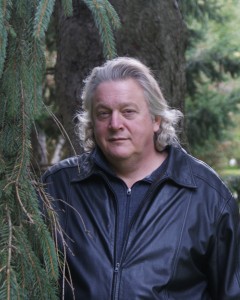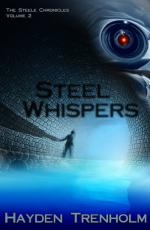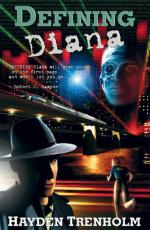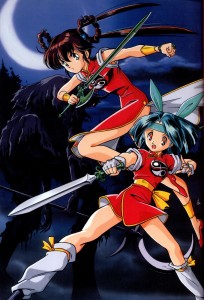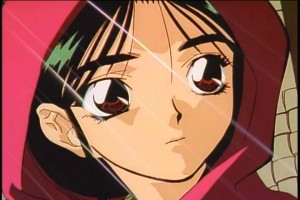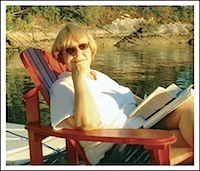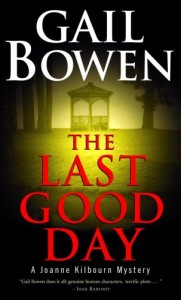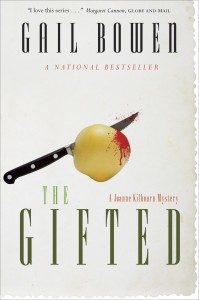Guest Post by Bob Stallworthy
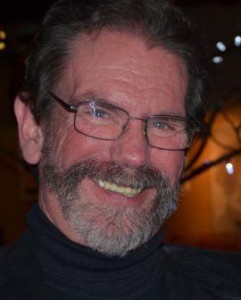 I can hear you all now, “What does a poet know about writing fiction?” At one time I might have agreed with you. However, I’ve begun to wonder whether the lines that divide fiction from poetry are more blurred than I thought they were.
I can hear you all now, “What does a poet know about writing fiction?” At one time I might have agreed with you. However, I’ve begun to wonder whether the lines that divide fiction from poetry are more blurred than I thought they were.
Let’s start with the obvious: poets and fiction writers both use words to get their information, images, impressions, across to the reader. I have often heard fiction writers say, “Yes, a poet has to be so careful with word choice. Poetry is harder to write.”
American poet, essayist, non-fiction writer, Robert Bly, once told an audience of young writers that fiction entered the body through the ear and poetry entered through the heart. Before you stomp off in a huff, let’s think about this for a minute. How often have you read a poem or heard one read, and before you are really conscious of hearing it, you have reacted to it? As if something shadow soft had passed over and then through you. Then you begin to think about the words you heard. And, how often have you read a good piece of fiction and found yourself relishing the words and then the images and emotions they have created? My question then is, aren’t the fiction writers being just as careful about their word choices? If they aren’t they should be. Good fiction, just like good poetry, has a lot to do with using precisely the right word in the right place in the line. And, speaking of the right place in the line and in the right line, when we get this right we get the image we want that makes the reader say, “Wow! I never thought of it like that before.” Isn’t that what we, as writers, want?
Part of what will make the reader’s eyes go wide open and whisper that wished for line is an interesting use of rhythm. Oh sure, it is really important in poetry, you say. And, yes it is. I used to say that free verse poetry had no rhythm and no rhyme. I was only partially correct. It often has no rhyme. It does have rhythm – the rhythm of the language. It is there in fiction too. As a fiction writer you can use that rhythm to your advantage.
Rhythm may be obvious in a poem and not so obvious when it comes to fiction. How do you hear the rhythm when  writing fiction? The same way one does when writing poetry. Read the piece out loud. Get into the habit of doing this. Look for the ebb and flow. If you do, it will help to carry the reader away on your words. By the way, it will help you with your public performances.
writing fiction? The same way one does when writing poetry. Read the piece out loud. Get into the habit of doing this. Look for the ebb and flow. If you do, it will help to carry the reader away on your words. By the way, it will help you with your public performances.
Rhythm is just one component that goes into a poem or a piece of fiction. As a fiction writer you already know what the other elements are that must be in your fiction – plot, setting, character, crisis, resolution, etc. But, the question which comes at some point is, whether you write fiction or poetry, “Is this any good?”
First of all, I would like to suggest that the use of the terms good and bad, works or doesn’t work, get dropped from the vocabulary. These are value judgements which sidetrack the discussion into the realm of personal taste. You can spend a lot of time in that realm and get no useful information about the writing.
Years ago, I found a hierarchy created by American writer and critic, James Dickey. The hierarchy is based on his reaction as a reader to a piece of poetry. I suggest that these statements apply equally well to fiction:
Lowest level: This probably isn’t true and even if it is, I couldn’t care less.
Next level up: This is probably true, and therefore I react to it differently than I did the first level.
Third level: This is probably true, but so what –
Best level: Not only is this true, but it is with a truth I would not have reached on my own had I not read this piece of writing.
Some writers dislike the idea of a hierarchy when it comes to assessing writing. Perhaps you would prefer to consider a number of questions which are used to illicit the reaction of the reader. I encountered these questions as a member of a poetry group facilitated by poet, essayist, professor, Richard Harrison. The following questions are adapted from Writing with Power, Techniques for Mastering the Writing Process by Peter Elbow. Within our poetry group, the poet presents his/her poem and then asks the group members some or all of the following depending on what the poet wants to know:
– what did you notice?
– what connections did you make?
– what questions were you left with after you finished reading?
– were there places where you left? i.e. your mind wandered
– where did you stop reading?
– were there places where you agreed, disagreed, argued?
 I can’t help wondering if these questions apply equally well to fiction. For example, “Where did you stop reading?” translates into “Where did you close the book and put it back on the shelf or in the box for the book sale?”
I can’t help wondering if these questions apply equally well to fiction. For example, “Where did you stop reading?” translates into “Where did you close the book and put it back on the shelf or in the box for the book sale?”
Whether you write fiction or poetry, there is always the pesky question of, “How do I know this is done?” I leave you with some thoughts that, again, I have learned in Harrison’s poetry group:
– a poem is the dramatization of a single voice
– a short story is the dramatization of a character
– a novel is the dramatization of a world
If the above is so, then a poem is complete when the voice has said all there is to say that will add to the understanding of the reader/listener.
A short story and a novel are similarly finished when nothing is left that the reader/listener needs to know in order to understand the character or the world.
Can fiction writers and poets learn from one another? I certainly hope so. I have been doing so for most of my writing career. Thank you to Ace Jordyn for inviting me to put some of my thoughts together for this blog. I hope the ideas are of some help.
***
Bob Stallworthy has four books of poetry published and one non-fiction e-book, In Silhouette: Profiles of Alberta Writers, which is hosted on the Frontenac House website. His latest book of poetry, Things that Matter Now, Frontenac House, 2009 is in its second printing. Bob’s poetry has been short-listed for the W.O.Mitchell City of Calgary Book Prize twice and the Stephan G. Stephansson Award for Poetry once. He is co-recipient of the 2002 Calgary Freedom of Expression Award. He is also a Lifetime member of the Writers’ Guild of Alberta.
Link on Frontenac House website: http://frontenachouse.com/?s=Stallworthy&submit=Search+Site

